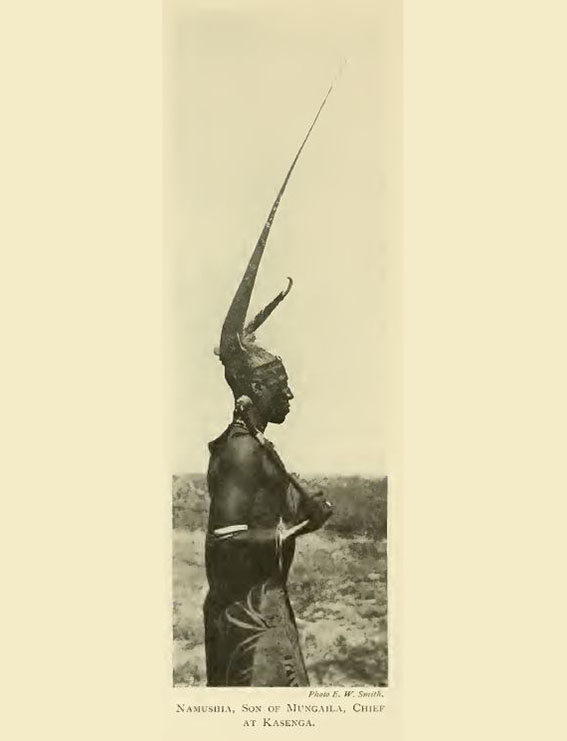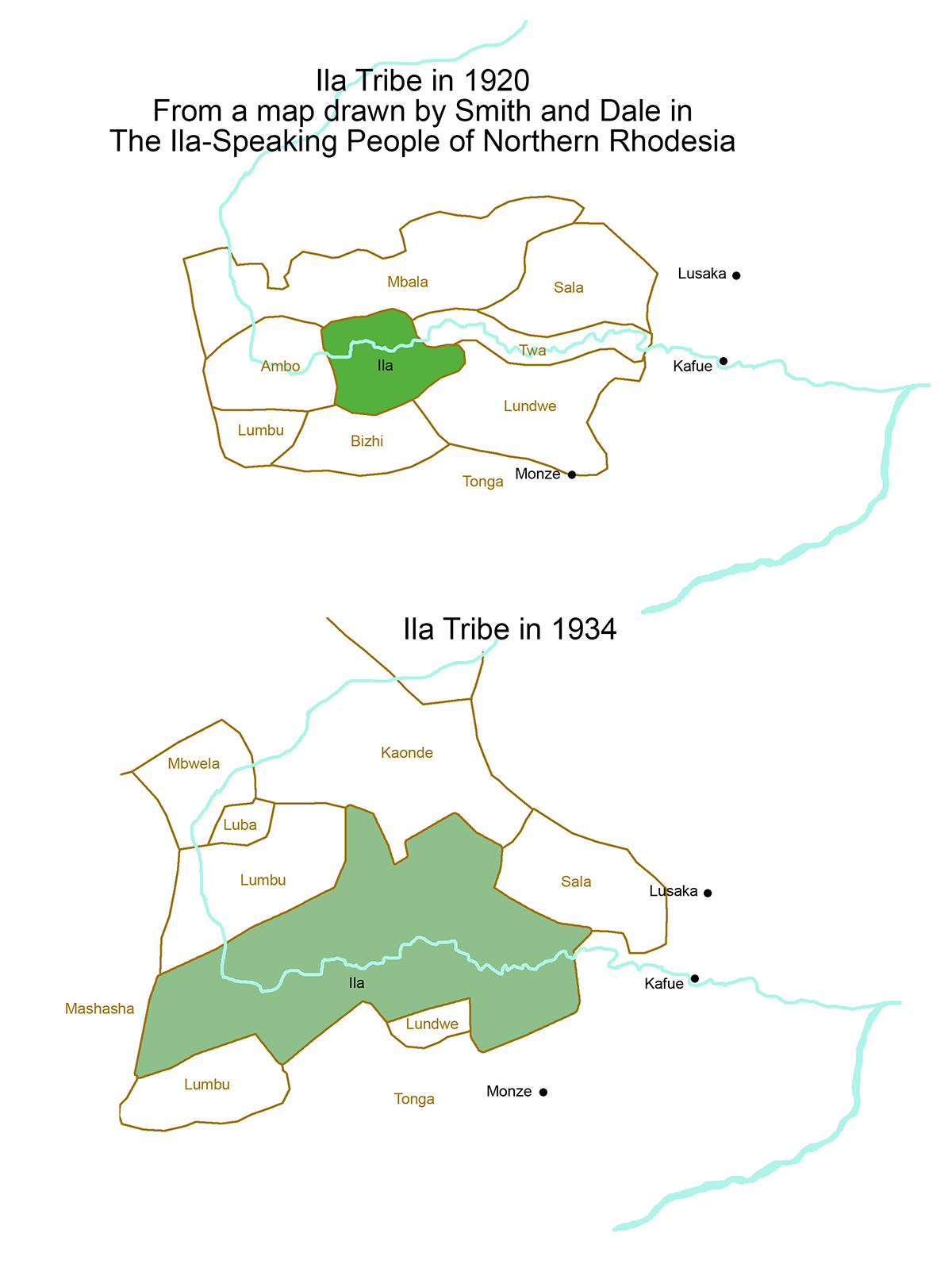The Ila are one of the first Bantu to arrive in present-day Zambia. It is thought that they came from the northeast, around the Great Lakes, between 1200 and 1300 AD. If asked, the Ila would say ‘they descended’ about their origins, because, even to them, their arrival in Ilaland is not known. Some of the elders point to weather-worn rocks near Namwala, saying that the indentations in the rocks are those made by the footprints of their ancestors.
Their home along the Kafue River is flat grasslands where they herded cattle, planted crops, fished in the rivers and hunted the plentiful antelope. The grass in the Kafue Flats grew to a height of 8-10 feet and, it is thought, that this was the reason they developed their coiffure. The hair of the men was grown long and woven into tall spikes. It is said that their wives’ hair would be shaved off and added to that of their husband. These tall spikes of hair would have made them visible in the high grass of the Flats when out on a hunt. The Lozi people, to whom they paid tribute during the late 1800s, named the Ila, Mushukulumbwe which means ‘to brush the hair back from the forehead’.

Because of their vast cattle herds they were raided by the Lozi from the east during the 1800s who came with their army to find food. The Ila were no match for the trained Lozi army.

We can see from this early map that the Ila (Bashukulompo) are mentioned under the Makololo Empire. This is the time when the Kololo, a Sotho-speaking group, had taken control of the Lozi Empire.
The Ila did not have a central authority; each village head organised his own clan. They often quarrelled with each other over land, cattle or fishing rights and were fiercely protective when strangers arrived.
It is known that slave traders did venture into Ilaland, but it is not thought that the slave raids were as serious as those in other parts of the region.
The first Europeans to venture into Ilaland were, it is thought, Portuguese but they left no record. The first written record we have is by David Livingstone who passed by the region in 1855 and met with a group of Ila near Monze. David Livingstone had been advised not to enter Ila territory and it is probably a good thing that he did not.
In 1886, Emil Holub the Czech explorer with his wife entered Ilaland and was lucky that he and his wife got out alive. They lost nearly all their property but Emil Holub managed to save his diaries. In 1888, Frederick Selous, the famous hunter, also came to Ilaland. He too was lucky to leave with his life, losing everything in the process.
In 1893 came the march of the missionaries. The Primitive Methodist Mission set up at a place called Nkala, a hilltop near present-day Itezhi-Tezhi. For some reason, the missionaries were left alone, and in 1901 an administrative boma was built there too. This boma only lasted for a few years after which it was moved to Namwala (Shaloba).

The top map, from 1920, shows the size of Ilaland which is smaller in comparison to the area shown in 1934. There are some different names too. I have no idea who the Mbala or Bizhi people are (research required!). What is interesting in the map from 1920 is the mention of the Twa all along the Kafue River. The Twa were the hunter-gatherers, the original occupants of Zambia who had been forced off their land by the incoming Bantu. Unlike the hunter-gatherers in Botswana who fled into the marginal desert-like Kalahari, our Twa fled into the marshes. The map in 1934 does not mention them.
